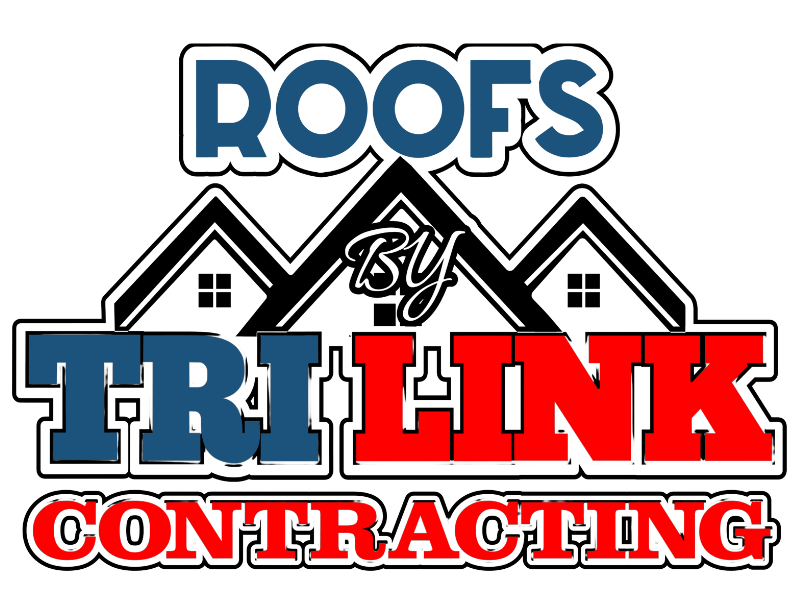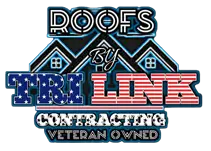Raise the Roof: A Shingle-Handedly Hilarious Guide to Residential Roof Replacement!
Did you know that according to HomeAdvisor, the average homeowner spends about $7,633 to install a new roof, and most spend within a range of $5,202 and $10,128?
According to the National Roofing Contractors Association, the popular choice for residential roof replacement in North America is asphalt shingles, accounting for nearly 70% of all residential roofing installations.
Residential roof replacement can significantly boost your home value. According to a Remodeling magazine report, homeowners can recover 68.2% of the cost of a new roof on their home’s total value.
Welcome to our light-hearted yet comprehensive guide on residential roof replacement! At Tri-Liink Contracting in Washington County, PA., we’re not only passionate about quality workmanship but also believe in adding a sprinkle of humor when tackling important aspects like maintaining and improving your home. Re-shingle with confidence now by discovering these secrets to rewarding Residential Roof Replacement!
1. Preparing for Your Residential Roof Replacement
Before embarking on this hilarious journey called “roof renovation,” it’s crucial to get prepared. Here are five essential steps:
Step 1: Inspect – Start by inspecting your current roof for any signs of damage or wear-and-tear. Look out for missing or damaged shingles, leaks inside your home during rainfall, or sagging areas.
Step 2: Budget – Determine how much you can allocate towards your home renovation project as budget plays a significant role in selecting suitable roofing materials and hiring professionals if needed.
Step 3: Research – Dive into some research! Explore different types of roofing materials available and their pros and cons based on factors such as durability, weather resistance, maintenance requirements, and aesthetics.
Step 4: Choose Wisely – Once you have a fair understanding of the available options, it’s time to choose wisely. Consider your budget, climate conditions in Washington County, PA., and the lifespan of the materials before making a decision.
Step 5: Secure Permits – Don’t forget about permits! Depending on where you live and the extent of your roof replacement project, you may need to secure permits from relevant authorities. It’s always better to be safe than sorry!
2. “Shingle” Your Way Up with DIY Roof Replacement
If you’re feeling adventurous and looking to save some money, why not try a do-it-yourself approach for shingle installation? Here are five simple steps:
Step 1: Gather Tools – Assemble all the necessary tools like roofing nails, hammer, ladder, measuring tape, utility knife, chalk line tool, safety gear including gloves and goggles.
Step 2: Remove Old Shingles – Start by removing old shingles carefully using a flat pry bar or specialized shingle removal tools. Ensure that all debris is cleared before moving on to the next step.
Step 3: Install Underlayment – Lay down a solid foundation by installing underlayment sheets over your roof deck as an added layer of protection against moisture infiltration.
Step 4: Apply Shingles – Begin placing new shingles at the bottom edge of your roof while adhering to proper alignment techniques recommended by manufacturers. Use roofing nails or adhesive as per instructions for secure attachment.
Step 5: Finish with Flashing – Complete your DIY masterpiece by adding flashing around chimneys, vents or any other areas prone to leaks. This waterproof barrier will ensure long-lasting durability and prevention against water damage.
3. Professionals Know Best for “Roof Makeover”
Not everyone has the time or confidence for DIY projects when it comes to residential roof replacement. Hiring professionals ensures quality workmanship and saves you from potential hassles. Follow these five steps to find a reliable roof replacement contractor:
1: Research – Start by researching reputable roofing contractors in Washington County, PA. Check online reviews and ask friends or neighbors for recommendations.
2: Credentials – Verify the credentials of potential contractors such as licenses, certifications, and insurance coverage to protect yourself from any liability during the project.
3: Portfolio – Examine their past work through portfolios or references to ensure they have expertise in residential roof replacement with satisfied customers.
4: Get Multiple Quotes – Obtain multiple quotes from different contractors and compare them based on pricing, materials used, warranty offered, and estimated completion time.
5: Sign a Contract – Once you’ve made your decision, sign a detailed contract that includes all relevant aspects like scope of work, timeline, costs breakdowns, payment terms including retention fee if applicable.
FAQs
1. How often should I replace my residential roof?
A. The lifespan of a residential roof varies depending on various factors like materials used and climate conditions. As a general rule of thumb,
asphalt shingle roofs typically last around
20-25 years while metal roofs can offer up to
50+ years of longevity.
Regular inspections are essential to assess its condition accurately over time
2. Can I install new shingles over old ones?
A. In some cases,
it may be possible to overlay new shingles directly over existing ones.
However,
this only applies if there is no significant damage like leaks or structural issues.
Keep in mind that this could reduce the overall lifespan of your new roof compared to complete tear-off options.
Tips for Installation and Maintenance:
– Safety First! Always follow safety guidelines when working at heights.
– Consider energy-efficient roofing options like reflective coatings or cool roofs for added savings on utility bills.
– Regularly clean the gutters to prevent clogs and potential water damage.
– Schedule regular roof inspections by professionals to ensure peace of mind.





